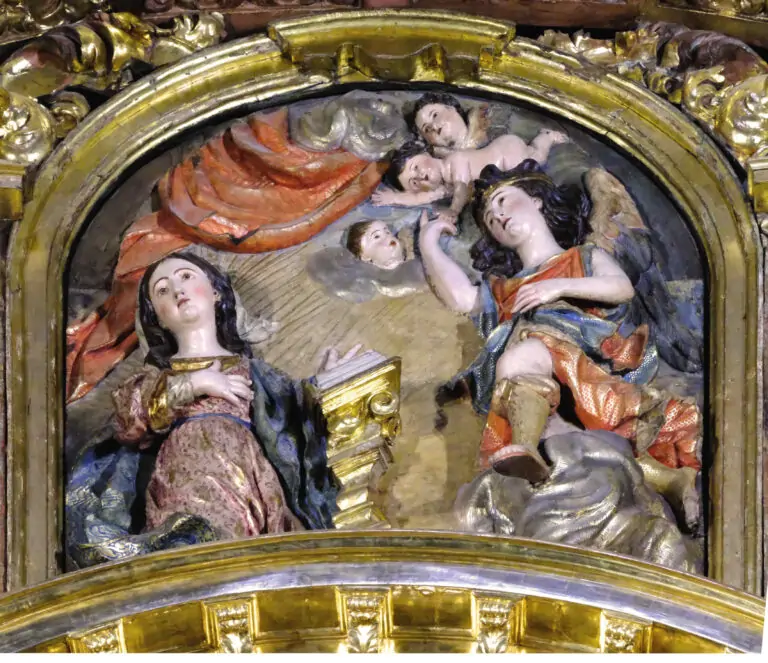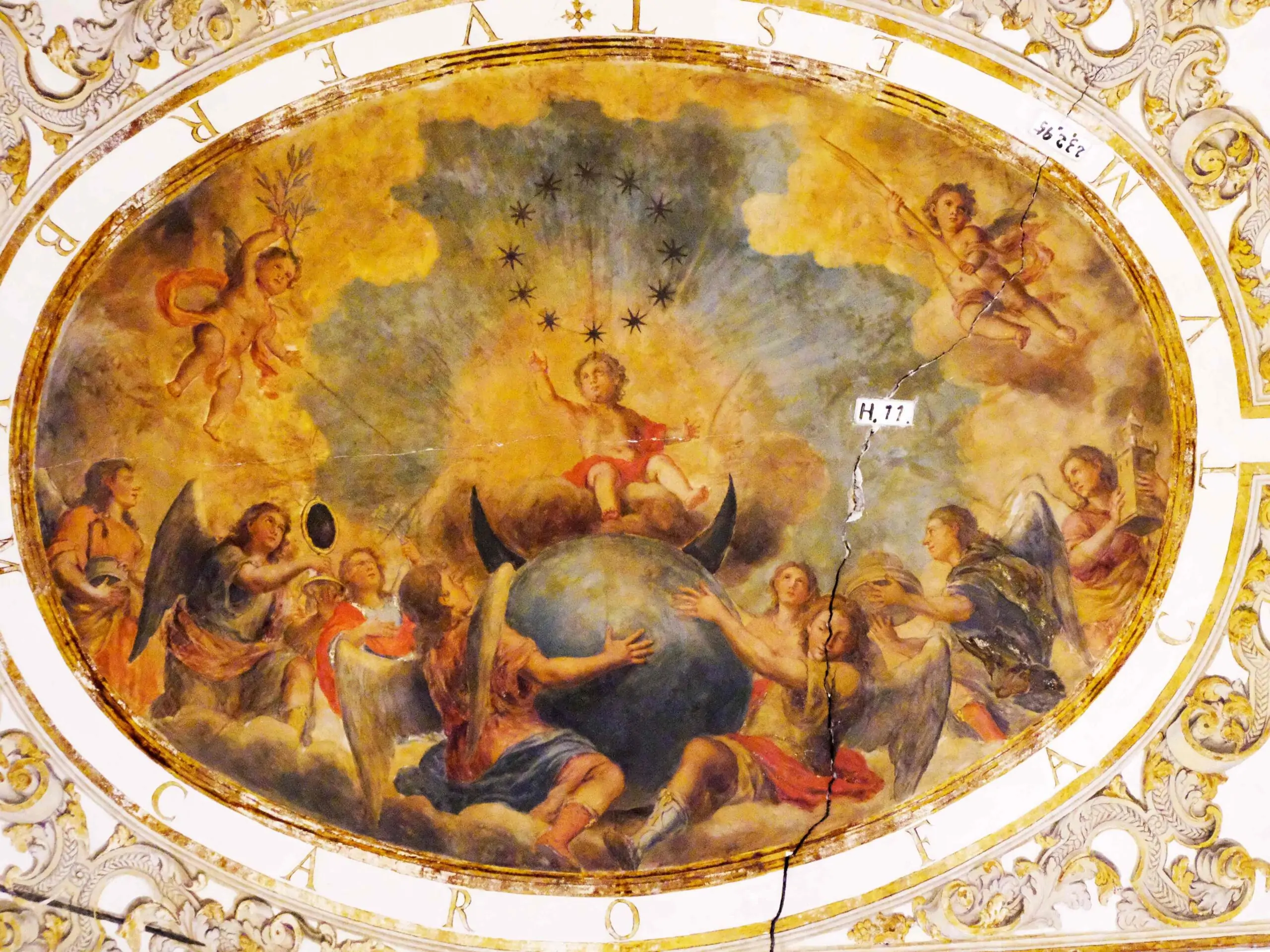ANNUNCIATION OF THE LORD
Solemnity of the Annunciation of the Lord. When the fullness of time had come, the One who from before the ages was the only begotten Son of God, for us men and for our salvation, by the power of the Holy Spirit, became incarnate in Mary, the Virgin, and was made man.
He is depicted twice in our church.
This relief, integrated in the altarpiece that Cristóbal de Guadix made in the cur-rent chapel of the Amparo, is part of the traditional iconography of this time.
Mary, depicted as a young woman, is on a kneeler in prayer when the angel Gabriel, with a solemn demeanour, gives her the news that she is about to become the Mother of Jesus Christ.
Surprised by this announcement, she is shown to have been conceived by the work and grace of the Holy Spirit through the rays in the background of the composition.
Lucas valdés produced one of his most spectacular paintings in the sacristy for the former Dominican convent of San Pablo. Jesus Christ, seated on the globe as Saviour of the World, points to a crown of twelve stars, which identify his Mother, the Virgin Mary.
Although she is not physically represented, she is apocalyptically depicted, as Saint John describes her as a woman clothed with the sun, with the crescent moon at her feet and twelve stars above her head. As in this case the points are pointing up-wards, she is shown as being full of grace.
Around the image of the Child, an angelical court holds various attributes, such as some of the litanies of the Rosary, inextricably linked to the Order of Preachers.
Annunciations are quite traditional in convent environments, particularly in female ones, but in any case, they are a reflection of the unrestricted acceptance of God's will. Undoubtedly, the allegory of the Sacristy, through the recitation of the rosary, is a reflection of the Virgin Mary's exaltation.




